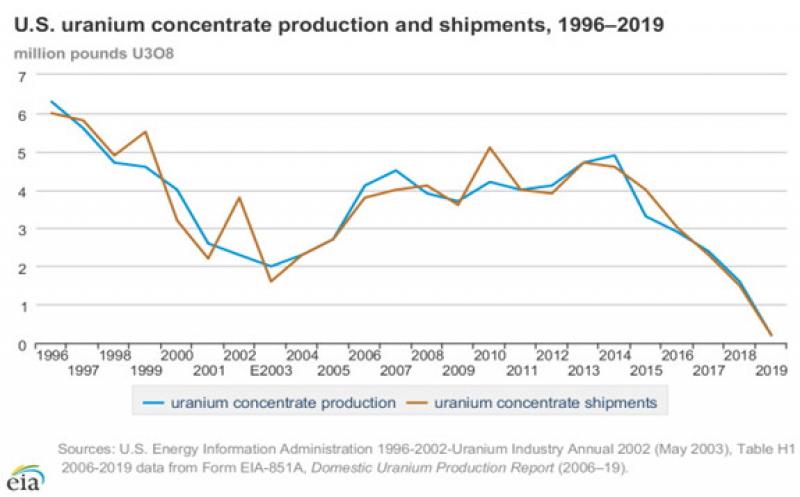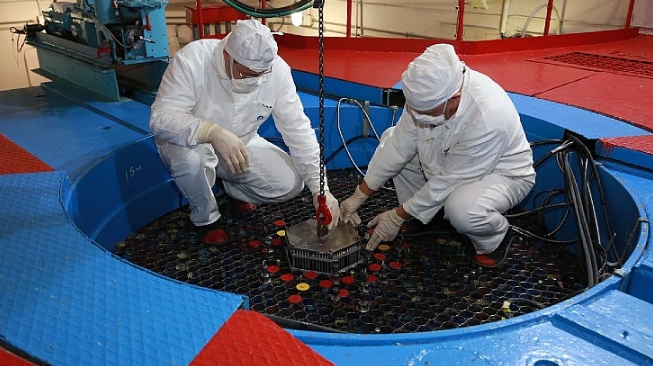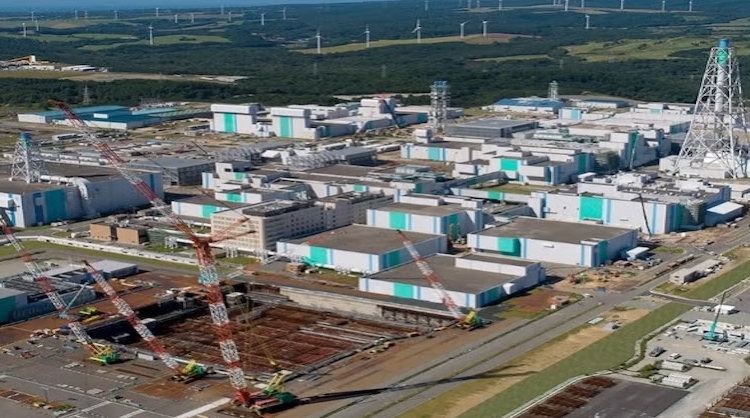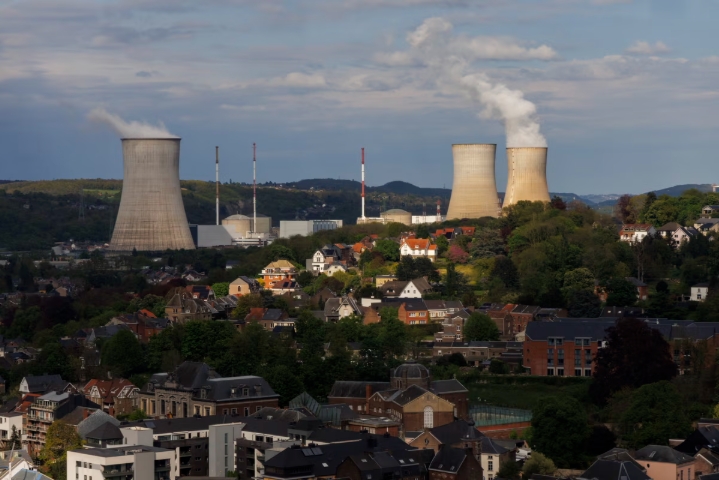The USA produced a total of 0.17 million pounds U3O8 (65.4 tU) of uranium concentrate from all domestic sources in 2019, according to a newly published annual report from the US Energy Information Administration (EIA). This was 89% less than in 2018.

The 2019 Domestic Uranium Production Report recorded US uranium production in 2019 from six facilities: five in-situ leach (ISL) plants in Nebraska and Wyoming (Crow Butte Operation, Lost Creek Project, Ross CPP, North Butte, and Smith Ranch-Highland Operation) and one underground mine. At the end of the year, two conventional uranium mills - Shootaring Canyon Uranium Mill in Utah and Sweetwater Uranium Project in Wyoming - were on standby, and the White Mesa Mill in Utah was no longer producing uranium. The report does not provide details of the amount of ore fed to mills from underground mines, but notes that this may include ore mined and shipped to a mill during the same year, previously mined ore from stockpiles at mine sites, ore from stockpiles maintained at a mill site, or a combination of these.
At the year's end, three ISL plants - Lost Creek, Nichols Ranch ISR Project, and Smith Ranch-Highland, all in Wyoming - were operating with a combined capacity of 9.5 million pounds U3O8 per year, the EIA said. Six ISL plants were on standby.
Total employment in the US uranium production industry was 265 full-time person-years (one person year is equal to full-time employment for one person), a 29% year-on-year decrease. Employment in mining activities, at 48 person-years, was 56% down on the 110 person-years recorded for 2018, but exploration employment, at 40 person-years, showed a 48% increase.
Reported estimated US uranium reserves at the end of 2019 were 31 million pounds U3O8 at a maximum forward cost of up to USD30 per pound; 206 million pounds U3O8 at up to USD50 per pound and 389 million pounds U3O8 up to USD100 per pound.
"These reserves are a fraction of likely total domestic uranium reserves because we did not include inferred resources that were not reported because of a lack of cost estimates or because the reserves were not located on actively managed properties," the EIA said.
The Nuclear Fuel Working Group, established last year by the US Administration to analyse national security considerations with respect to the entire nuclear fuel supply chain, recently published a strategy to revive the USA's nuclear fuel cycle. In it, the group recognised the importance of taking "focused, deliberate action" to prevent the near-term collapse of the domestic uranium mining, milling and conversion industries. Its recommendations include establishing a uranium reserve, ending the Department of Energy's bartering of uranium and re-evaluating DOE's excess uranium inventory management policy.








